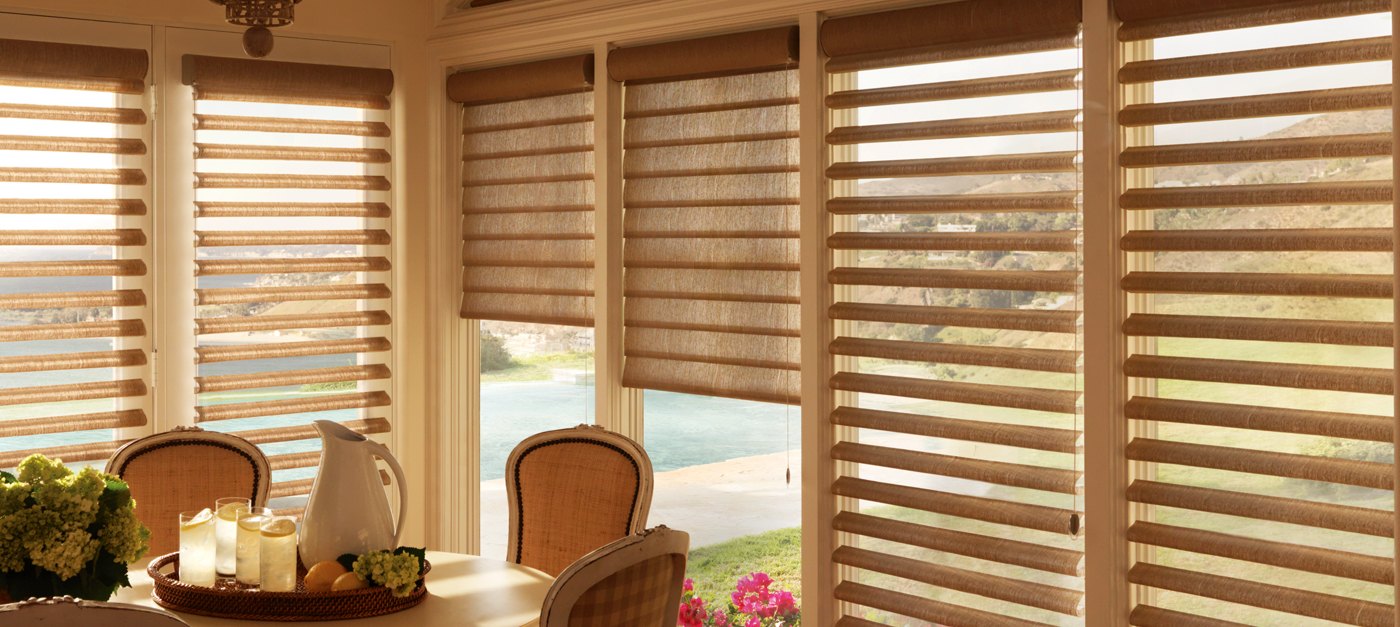When decorating an interior space, finding the right window treatment for a room can be daunting. Tasks like finding the right size, color or type of window treatments needed to achieve the look you're after can be down right mind boggling! But, it doesn't have to be. Using the tips covered here can make achieving the look you imagined for your space easy as 1 2 3!
First things first: Choosing the type of window treatment that works best for your room design begins with knowing the level of light you prefer for that particular room. For example, drapes usually are thicker in texture and have lining to block out sunlight and/or noise. In contrast, curtains are less dense and are available in sheer fabrics to allow more light into the room. The same concept applies to blinds whereas mini blinds allow you to control the amount of light and roman shades block out all light. If you need to regulate blinding light, try solar shades, which are made of perforated vinyl that can be adjusted accordingly. It simply boils down to how much light and privacy you need.
Second, bigger is better! So, be sure not to let the size of the window intimidate you. Keep in mind that you will be hanging the curtains close to the ceiling (leaving about 1 inch clearance) and using a 1 inch curtain rod. You can easily fill in large window spaces by combining curtains or drapes with blinds. For instance, you can choose to treat bay windows with curtains, roman shades or mini blinds for a simplified look. But, if you prefer to use only curtains or drapes, be sure that the curtains measure 2.5 times the size of the window. This will ensure the desired fullness effect for your window treatments.
When working with large windows, it is also ideal to find window treatments that match the paint color in the room, so as to not overwhelm the space. Choosing the desired length of the window treatment for your window space is as easy as deciding whether you want the bottom of your curtains (or drapes) to touch the floor or give a "puddle effect" by adding 3 or 4 inches beyond the floor length. When purchasing drapes or curtains, buying the longest length available and having them hemmed to your desired length at your local dry cleaners can ease the pain and uncertainty of ordering custom window treatments.
Lastly, deciding on whether to use a solid color or print can be easily determined by looking at how it compliments the rest of the furniture in the room. It is not necessary or recommended to choose a print that matches your furniture pieces. For example, adding plaid curtains to a room that has a plaid couch or chairs could prove to be overwhelming. Instead, find a neutral color that accents the prints throughout the room, or as previously mentioned, choose a color that matches or accents the color of the walls. This can ensure creating a space that looks well put together and inviting.


